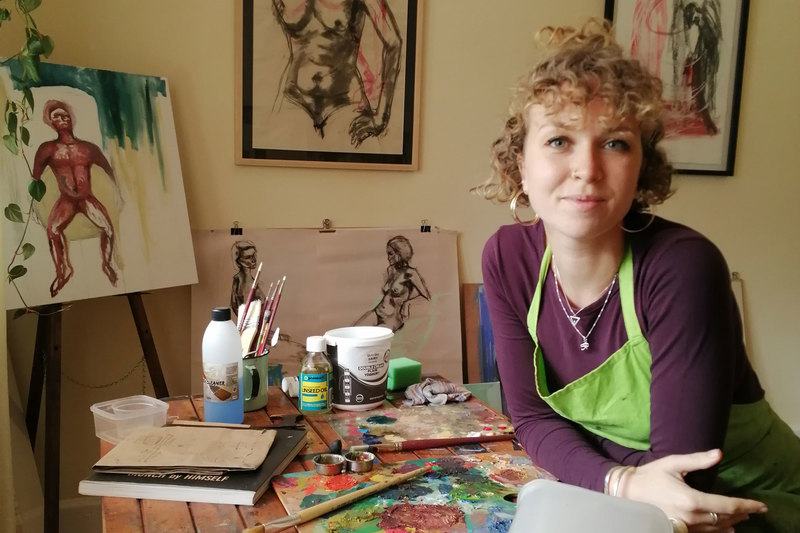Art, my creative response to a pandemic
07 May 2020 | Story Catriona Towriss. Photos Catriona Towriss. Voice Sarin Drew. Read time 4 min.
#UCTLockDownLetters is a new feature on the University of Cape Town (UCT) news site. Staff, students, parents of students: we want to hear about your experiences of work and life in lockdown. Emails, audio and video clips, prose and poetry are also very welcome. This is your space.
This contribution comes from Dr Catriona Towriss of the Centre for Actuarial Research in the School of Management Studies where she has worked for the past five years.
6 May 2020
These artworks depict the voices of the poor in our communities, echoing familiar phrases reflecting their circumstances and needs.
I am a founding member of the Wynberg Community Action Network, which is one of more than 100 such groups that have emerged across Cape Town in response to the COVID-19 pandemic.
Since Easter, our group has received hundreds of requests for food from people across our neighbourhood, many of whom are refugees and do not have access to the state support system. These requests have come to my personal email and WhatsApp.
It has been impossible for our group to respond to this need with the resources we have. But the requests keep coming.
“This experience has deepened my understanding of what that inequality means.”
I have found this emotionally overwhelming, and the art piece is a response to that ‘overwhelm’. As a social scientist, I am well aware of the levels of inequality in South Africa, but this experience has deepened my understanding of what that inequality means. The act of writing out each request by hand onto paper became a way to process the experience.
A creative practice has always been a source of enjoyment for me. For many years my practice was a regular three hours of life drawing on Wednesday evenings. Those sessions were a space of both intense focus and relaxation; I often experience it as a visual meditation.
At the end of a long day of research or lecturing, I have always been grateful for this time away from my intellectual work. As I became more and more aware of how much joy art-making brought into my life, I began making more time and space for it.
“The act of writing out each request by hand onto paper became a way to process the experience.”
A few years ago, I set a room aside in my home for a studio space. The walls became a home for work that had previously been rolled up in cupboards. And with the drawings on display, I could return to them and develop them into paintings or prints.
Most of my artwork is figurative, a reflection of my interest in people and embodiment. It is this interest that connects my creative and academic practices. My research work examines reproductive well-being, maternal experiences and autonomy.
Both practices are a way for me to tell stories.
Most of my work is a record of my visual observations: portraits made of friends who have sat for me in my studio, or people who have posed in life drawing sessions.
Recently, I have been turning to my artwork to process my emotions and experiences. For example, I felt called to paint the collective grief UCT experienced after Uyinene Mrwetyana’s death.
The paintings displayed in this article follow the same thread.
 This work is licensed under a Creative Commons Attribution-NoDerivatives 4.0 International License.
This work is licensed under a Creative Commons Attribution-NoDerivatives 4.0 International License.
Please view the republishing articles page for more information.
Related














